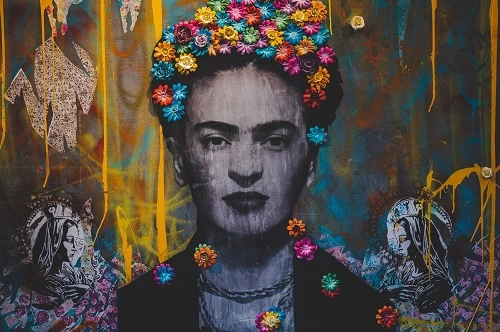
Afrofuturism: From the Past to the Living Present
Afrofuturism is a movement founded by futuristic artists of various generations who wanted to change the way black people are treated and perceived in society. Though it started as a vision, Afrofuturism is still considered a daring instrument, and many artists make various statements using this tool. Afrofuturism envisions a world with no white supremacist thoughts. Always keeping a check on both the past and present of how blacks are being treated, many have used science, technology, and art to create a better future for all blacks of the current generation.
When one looks deeply into what Afrofuturism tries to achieve or wants the world to be, it is something that is black descendant centric, a world that belongs to the African diaspora, a world where black people and their descendants are instrumental in anything major to happen. If we look into the origin of where it all started, we must go all the way up to 1993, when Mark Dery, a white American author, first coined this term. But Afrofuturism is just a word that was made up in 1993. The idea of a world that Afrofuturism describes has been a part of every African American’s mind for decades in a secret way.
Afrofuturism has also been used to talk about a lot of various kinds of art, artists, and subcultures. The American jazz singer "Sun Ra," born in 1914, was one of the most regarded musicians for being bold and outspoken about his Afrofuturistic ideas. His works like "El Saturn Record Label," which had tunes like "Tapestry from an Asteroid" and "Space is the Place," combined Egyptian cosmology with Afrofuturism big time.
Kamasi Washington, who plays the saxophone and writes music, shows how Afrofuturism can be used in the present without being limited by it. From 1999 to 2004, he studied ethnomusicology at the School of Music, which widened his perspective on the globe. He claims to identify with the Afrofuturist movement's science fiction and surrealist elements. According to Kamasi Washington, he always had a storyteller's vision, and he would often get lost in his world. Once, he said he was fascinated to know that there is a large movement of like-minded people, even before he understood the phrase "Afrofuturism." It changed his taste in music and art, the way he thought, and even his very existence. Afrofuturism can be considered one of the reincarnation accessories of the African diaspora.
And in 1976, Octavia E. Butler, the American writer who is regarded as one of the inspirational figures of this movement, published her book "Patternmaster," which had a lot to say about Afrofuturism and a modern world being run by blacks. She used to live in the Los Angeles Central Library because she loved to tell stories. When she finished Patternmaster, she was able to follow her dream. In 2019, the Central Library established a "do-it-yourself" lab that was named after Butler. Recently, that lab has used 3-D printing to develop tailored healthcare worker supplies.
When we discuss how Afrofuturism has been used in filmography, many films come to mind. "Django Unchained," directed by Quentin Tarantino, was regarded as a gift because the movie hit blacks hard by portraying exactly how they were treated in the past and what a rebellious character would do when all hell breaks loose. Marvel’s "Black Panther" and ‘Black Panther: Wakanda Forever" are also regarded as famous works that have an Afrofuturism world in them.
But some people are against this because these films are the creation of white people. Their miniseries "The Falcon and the Winter Soldier," which hit the screens during the pandemic and in the crucial period when everyone was talking about "Black lives matter," is also being regarded by many as a product of Afrofuturism. Even the Oscar winning marvel movie ‘Spiderman: into the spider verse’ with the character Miles Morales, a black guy being Spiderman is regarded to be Afro Futuristic by a lot of people. However, all these are created by white people, so there are a few people who deny Afrofuturism here and call them normal characters who have black. However, films such as "Afronauts," "Black is King," and "Blade" are well-known examples of Afrofuturism.
In short, Afrofuturism is a style of art and a way of thinking about history and science that looks at how the culture of the African diaspora connects to science and technology. Technology and science fiction examine African diaspora issues. It includes a variety of media and artists who want to imagine the Afro-diasporic futures of the black.
